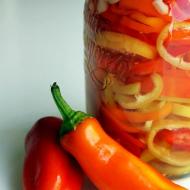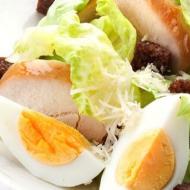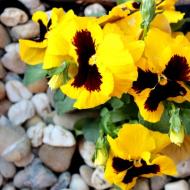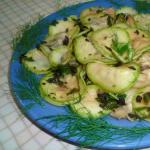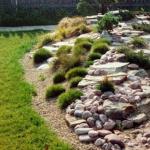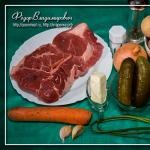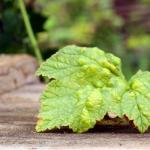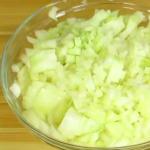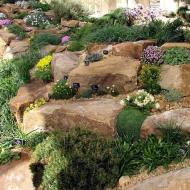
Bordeaux liquid - preparation, application of fungicide
I think that all gardeners and gardeners often hear that plants must in some cases be treated with a universal fungicide - Bordeaux liquid. Sometimes it is called Bordeaux mixture. I also mentioned this many times. What does it consist of? What is the cooking process? What plants in the garden and in the garden are treated with this fungicide?
Bordeaux mixture was invented by the French botanist Pierre-Marie Alexis Millardet (1838-1902) to protect grapes from disease.
You can buy it at any hardware store or store selling goods for gardeners. What is the composition of Bordeaux mixture? When you open the package, you will see two packages inside. In the first - quicklime (calcium hydroxide) in the form of a finely dispersed powder. In the second - a bright blue powder - blue crystals - copper sulfate (copper sulfate).
This liquid is used to treat flower, fruit, vegetable, berry crops from fungal diseases, ranging from potatoes, tomatoes, cucumbers, after germination, to apple trees, pears, and other fruit and berry plants. That is, Bordeaux liquid is a universal fungicide. The main substance that helps fight fungal diseases is copper, copper sulfate. But since copper, copper sulfate in its pure form burns the leaves, lime is added to the Bordeaux mixture.
Usually, gardeners use a 1% or 3% solution to treat garden plants.
Fruit and vegetable crops are treated with 1% liquid during the active growing season, that is, when the plants have leaves. And in the autumn and spring, before bud break or after the foliage has fallen, plants can be treated with 3% Bordeaux liquid. For berry crops, a 2% solution is prepared. Then the spores of scab, spotting, moniliosis, cladosporiosis, and other harmful fungi will not be able to multiply. This will protect our plants, trees, shrubs from fungal diseases.
To prepare a Bordeaux mixture solution, we need plastic or enameled buckets. Do not use metal or galvanized ones, otherwise the solution will react with the metal and the healing properties of the liquid will be nullified.
So, we need two plastic buckets. In each of them, we will dissolve one of the components of the Bordeaux mixture - separately from each other. 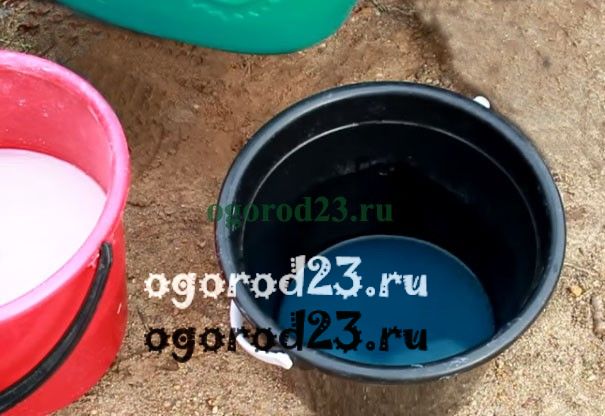
If we want to get a 1% solution of Bordeaux mixture, then first we dissolve 100 g of copper sulfate in 1 liter of warm water. The water temperature should be no higher than 50ºС, optimally - 30-40ºС. In order for the crystals of copper sulfate to dissolve, stir it for a while, wait until they are completely dissolved.
Then pour 100-150 g of lime into another bucket and pour 5 liters of water into it. Lime dissolves in water much better than copper sulphate, but still stir it well so that there are no lumps left - lime milk is obtained.
After preparing these two solutions, it is advisable to strain them through a very fine sieve or through two layers of gauze. Strain each solution separately. This is necessary so that the sprayer, the sprayer does not become clogged.
After straining both solutions, bring the volume of the copper sulfate solution to five liters as well.
Then we will pour a solution of copper sulfate into lime milk. Never do the opposite. Namely - copper sulfate - in a solution of lime. It is advisable to do this together. Someone is stirring the milk of lime, while the other is pouring a solution of copper sulphate into it in a thin stream. As a result, you should get a liquid of a pale blue celestial hue. This is 1% Bordeaux liquid.
It is very important that Bordeaux liquid has a neutral reaction. Therefore, it is necessary to observe the proportions when preparing it. If you put more lime in the liquid than you need, you will get a solution with an alkaline reaction, and if there is more copper sulfate than the recommended amount, then the liquid will have an acid reaction. In both cases, plants can get burned during processing.
How can you test a solution for a reaction? The easiest way is to check with an ordinary metal nail, clean, not rusty. Dip the nail into the bucket with the mixture, hold for a while. If there are red spots on the nail, then the solution is acidic. If there is nothing, then the solution is prepared correctly and has a neutral reaction. For an alkaline reaction, the solution is usually checked with litmus paper, and if you don’t have it, then try to keep the proportions when cooking so as not to spoil anything.
The prepared solution of the Bordeaux mixture is stored only for a day, that is, it is not subject to long-term storage. It is used completely and on the same day. This is an indispensable condition for the fact that your work is not in vain. Consider this when preparing it, try to use it all on the same day. That is, calculate how much solution you need, and cook as much.
To prepare a 3% solution, take 300 g of copper sulfate and 450 g of lime per 10 liters of water. The cooking process is the same as described above.
Now, I think you will be able to prepare a Bordeaux liquid for processing fruit and berry crops in your garden. It's not difficult at all.
Concentrated Bordeaux liquid appeared on sale in gardening stores. They sell it in plastic bottles of different capacities - from 100 ml to 1 liter. How to use? Bordeaux liquid ready (in bottles) is very convenient to use. The instructions are not difficult. You don’t need to mix anything, filter it - add 250 ml of liquid from the bottle to a bucket of water, stir it - and you're done. 
Ira
Indeed, sometimes you have to use any "poison" to cure or drive away unnecessary living creatures. I hear about Bordeaux liquid for the first time. Is it environmentally friendly or should it be used with caution?
Natalia
Bordeaux liquid cannot drive any living creatures away. It is used against fungal and bacterial plant diseases. Copper, which is part of copper sulfate, delays the development of fungal spores and destroys some types of bacteria. Bordeaux mixture is not environmentally friendly. Copper preparations are toxic. Of course, it must, like other fungicides, be used with caution. It is recommended to use it before the leaves bloom on the trees, in the fall after the leaf fall - this applies to 3% Bordeaux liquid. Try to use 1% Bordeaux liquid on vegetable and berry crops before the fruit appears.
Elena
And when can you spray it from pests? Before or after Bordeaux liquid? and in what time frame?
Natalia
Elena, I don't think it matters. Bordeaux liquid and pesticides perform different tasks. And the sequence of processing depends on what is more important for your garden or vegetable garden at the moment. In addition, it still depends on which drug you are going to use. For example, there is such a good insect-acaricide "Preparation 30B". It is designed to control pests of fruit trees - scale insects, false scale insects, whiteflies, leafworms, aphids, etc. They are recommended to process trees and berry bushes before bud break, at an air temperature of at least +4 degrees. Actually, it is designed to combat wintering pests. If this is a big problem for you, then, of course, treatment with Preparation 30B is needed first of all. And Bordeaux liquid can be sprayed when the buds hatch and the first young leaves appear. With vegetable plants, you can do the opposite. For example, treat seedlings of tomatoes, cucumbers from late blight, powdery mildew with 1% Bordeaux liquid, and when the first pests appear, for example, the Colorado potato beetle or aphids, treat them with insecticides from these pests. In this case, treatment from late blight and powdery mildew is a top priority, you can’t wait for the first signs of disease - if the tomatoes get sick with late blight, they can’t be saved. This is where prevention comes first.


